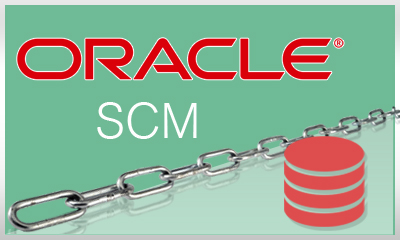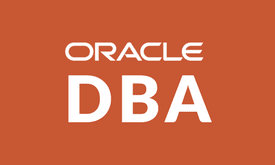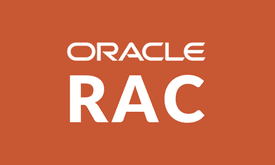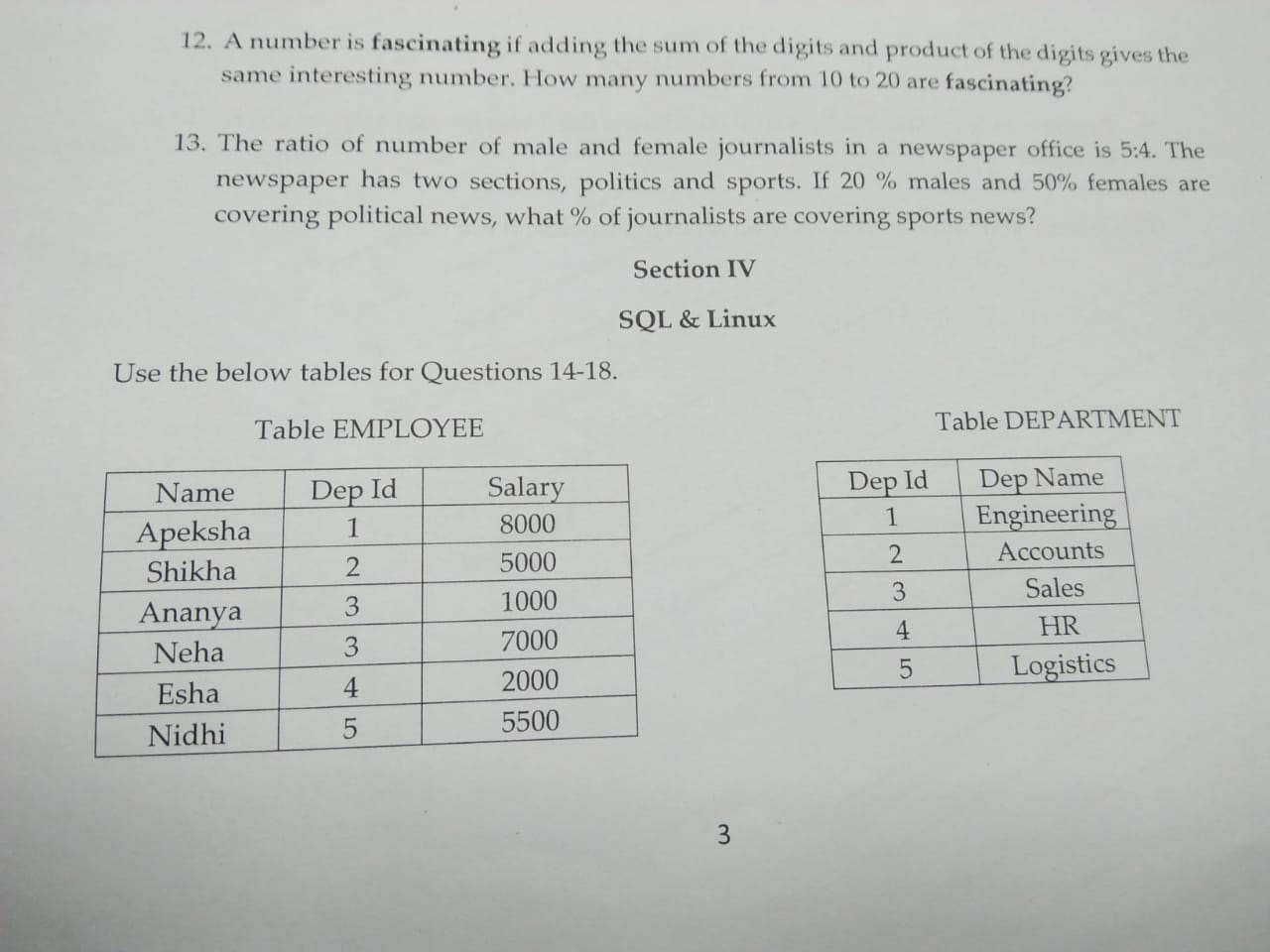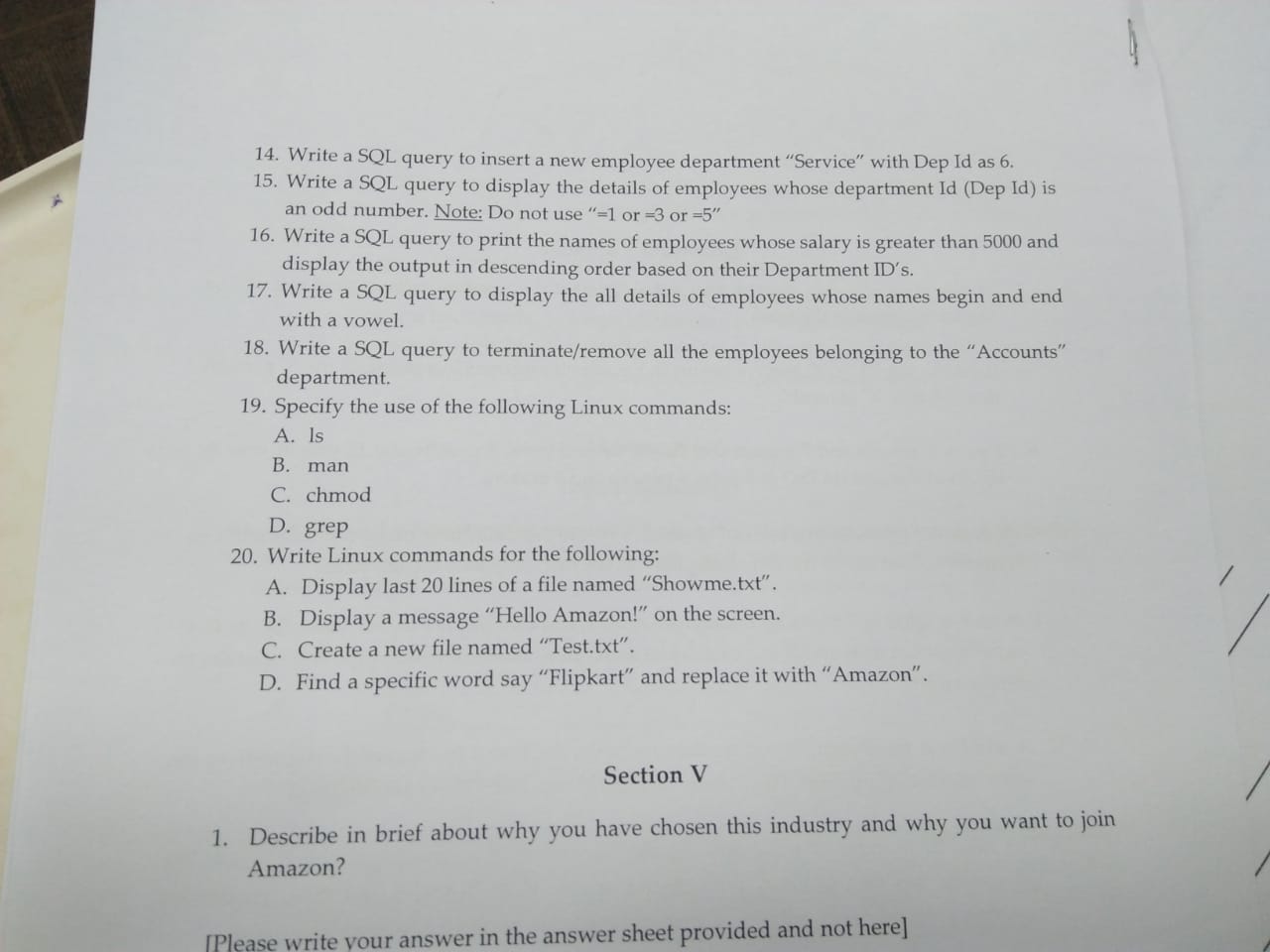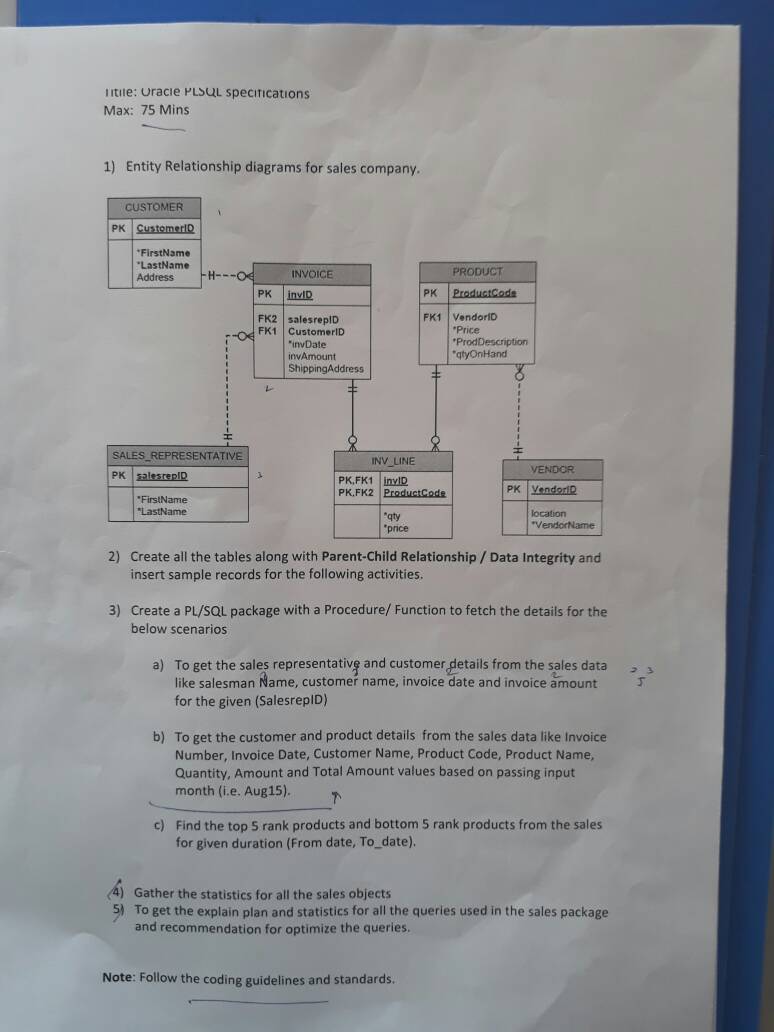Learn Oracle apps SCM modules from Leading Oracle Apps SCM training Institute in Chennai. We offer best Oracle SCM training in Chennai with advanced syllabus and real-time project scenarios. An Excellent ORACLE Apps SCM course that is exclusively designed with Basics through Advanced Oracle E-Business Suite R12 Concepts. Oracle E-Business Suite R12 Supply Chain Certified Expert Consultant, Order Management certification and Interview Guidance are provided during the course.
About Oracle Trainer
- Dinesh work as an Oracle Consultant & Instructor, He has over 15+ years of Oracle Implementation experience and recognized expert in Oracle SQL and PLSQL technologies, advanced analytics and Oracle data mining.
Mr. Dinesh specializes in Oracle Discoverer, Oracle OLAP and Oracle Data Warehouse Builder.
- He is also been as Senior Instructor of Oracle University and provided 200+ Corporate trainings, trained 25000+ freshers and corporate & fresher professionals.
He is an Oracle Certified Master (OCM). Expertised with RAC, Data Guard, ASM, Oracle Exadata, RMAN, Oracle SCM, Streams, Security & more.
He is among few of the Oracle Certified Master (OCM's) in the World to achieve below certifications in his area of research.
- Oracle Certified Professional (OCP) 9i
- Oracle Certified Professional (OCP) 10g
- Oracle Certified Professional (OCP) 11g
- Oracle 10g Certified RAC Expert
- Oracle 10g Certified Master (OCM)
- Oracle 11g Exadata Certified Implementation Specialist
Conducting regularly online- training for US peoples in all time zones (PST,CST,EST,HST,MST) My training is 100% Money Back Guarantee (Tuition fee) for Passing Online Examination with cent percent and ready to go live with production system immediately. If my training does not satisfy you at any point of time, even during the training period, you need not pay the tuition fee.
100% practical training only. It is not a slide show training program / theory class program. At the end of this class, definitely you will refer your colleagues / friends / relatives for my training.
About Oracle Trainer
- Dinesh work as an Oracle Consultant & Instructor, He has over 15+ years of Oracle Implementation experience and recognized expert in Oracle SQL and PLSQL technologies, advanced analytics and Oracle data mining.
Mr. Dinesh specializes in Oracle Discoverer, Oracle OLAP and Oracle Data Warehouse Builder.
- He is also been as Senior Instructor of Oracle University and provided 200+ Corporate trainings, trained 25000+ freshers and corporate & fresher professionals.
He is an Oracle Certified Master (OCM). Expertised with RAC, Data Guard, ASM, Oracle Exadata, RMAN, Oracle Performance Tuning, Streams, Security & more.
He is among few of the Oracle Certified Master (OCM's) in the World to achieve below certifications in his area of research.
- Oracle Certified Professional (OCP) 9i
- Oracle Certified Professional (OCP) 10g
- Oracle Certified Professional (OCP) 11g
- Oracle 10g Certified RAC Expert
- Oracle 10g Certified Master (OCM)
- Oracle 11g Exadata Certified Implementation Specialist
Conducting regularly online- training for US peoples in all time zones (PST,CST,EST,HST,MST) My training is 100% Money Back Guarantee (Tuition fee) for Passing Online Examination with cent percent and ready to go live with production system immediately. If my training does not satisfy you at any point of time, even during the training period, you need not pay the tuition fee.
100% practical training only. It is not a slide show training program / theory class program. At the end of this class, definitely you will refer your colleagues / friends / relatives for my training.
Course Curriculum
Curriculum
SQL Concepts
Best Oracle Apps SCM Training in Chennai
Introducing the Most Practical, Precise and Inexpensive Oracle Apps SCM classes in Chennai
Greens Technologies, The Best Oracle Apps SCM Functional R12 Training institute in Chennai provides complete hands on training in Oracle EBS R12: E-Business Essentials and Oracle E-Business Suite R12: Inventory and Order Management Fundamentals curriculum. The E-Business Suite R12 Supply Chain Certified Expert Consultant, Purchasing and Order Management certifications demonstrate Oracle Certification Program's continuing commitment to enhancing and extending the Oracle E-Business Suite Supply Chain Management family of applications. Rated as the Best Oracle's E-Business Suite R12 Supply Chain Management training Center in Chennai.
Top Quality Oracle Apps SCM Training Course in Chennai
Greens Technologies Trainings is the leading Oracle SCM training center in Chennai for Oracle Apps SCM Course where you can get class with highly qualified trainer. Oracle Apps SCM (Supply Chain Management) basically integrates and automates all key supply chain activities starting from design,planning,and procurement to manufacturing and fulfillment.
The Oracle Apps Modules covers in Oracle SCM Training Course are:
- 1.Inventory
- 2.Purchasing
- 3.Order Management
- 4.Brief Introduction to WIP and BOM Manufacturing Modules
- 5.Overview on R12 SCM Modules
- 6.New Features of R12 SCM Modules
Oracle R12 SCM Functional Training and certifications
- 1Z0-519 Oracle EBS R12.1 Inventory
- 1Z0-520 Oracle EBS R12.1 Purchasing
- 1Z0-521 Oracle EBS R12.1 Order Management
Oracle Apps SCM Training Course Objectives:
- Define and maintain a cycle count
- Understand performing inventory transactions using a mobile device
- Understand the planning and replenishment methods available in Oracle Inventory including min-max planning, reorder-point planning, replenishment counting, and Kanban replenishment
- Understand the overall inventory process in Oracle Inventory
- Understand the structure of an inventory organization in Oracle Inventory
- Understand the role of an item-master organization
- Define items in Oracle Inventory
- Learn to implement locator, revision, serial, and lot control for items, and perform transactions for such items
- Understand the concept of move orders
- Perform inventory transactions such as subinventory transfer and inter organization transfer
- Set up shipping networks between inventory organizations and understand the significance of direct shipment and intransit shipment
- Create an ABC ranking of items to be used in cycle counting and potentially in determining safety stock levels
R12.x Oracle SCM Applications Training Overview
In this Oracle Apps SCM Training course in Chennai, you will learn the basics of the Oracle Financial Applications, to include General Ledger, Purchasing, Payables, Fixed Assets, Order Management, Accounts Receivables, Cash Management, and Projects. Also, students will learn concepts that are included across these applications such as Suppliers, Customers, and Items. In addition to learning about these products, you learn how they work together in different flows to suit your business needs. Business flows include Procure to Pay and Order to Cash Flow. You will also be able to try many of these products in class using a series of hands on practices, which build on one another thus allowing you to experience both the tools and the workflow of which they are part.
This course will be applicable for customers who have implemented Oracle E-Business Suite Release 12 or Oracle E-Business Suite 12.1.
- Understand the Business Flows of the eBusiness Suite
- Understand Oracle Procurement Flows and Products
- Understand Oracle General Ledger
- Understand Oracle Payables and Receivables
- Understand Oracle Order Management
- Understand Oracle Assets
Oracle Applications SCM Functional Training Content & Course Syllabus
Oracle Applications SCM Functional course content is exclusively designed with Basics through Advanced Concepts.E-BUSINESS ESSENTIALS
- Navigating in R12 Oracle Applications
- Log in to Oracle Applications
- Navigate from Personal Home Page to Applications
- Choose a responsibility
- Create Favorites and set Preferences
- Use Forms and Menus
- Enter data using Forms
- Search for data using Forms
- Access online Help
- Run and monitor Reports and Programs
- Log out of Oracle Applications
Introduction to Oracle Applications R12
- Explain the footprint of R12 E-Business Suite
- Describe the benefits of R12 E-Business Suite
- Describe R12 E-Business Suite architecture
- Shared Entities and Integration
- Explain shared entities within R12 E-Business Suite
- Describe key integration points and business flows between products in E-Business Suite (EBS)
- Identify Key Business Flows and products involved in E-Business Suite (EBS)
Fundamentals of Flexfields
- Describe Flexfields and their components
- Identify the steps to implement a Flexfield
- Define value sets and values
- Define Key Flexfields
- Define Descriptive Flexfields
Fundamentals of Multi-Org
- Define Multiple Organization (Multi-Org)
- Describe the types of organizations supported in the Multi-Org model
- Explain the entities of Multi-Org
- Explain how Multi-Org secures data
- Identify key implementation considerations for Multi-Org
- Define Multi-Org Access Control
- Explain Multi-Org preferences
- Explain Enhanced Multiple-Organization Reporting
- Explain the concepts of subledger accounting
Fundamentals of Workflow and Alerts
- Explain Workflow concepts
- Describe the benefits of Workflow
R12 Oracle Inventory
Overview of Oracle Inventory
- Receiving Inventory
- Transferring Inventory
- On-hand and Availability
- Issuing Inventory
- Inventory Accuracy
- Discussing Inventory Application Integration
Defining Inventory Organizations
- Overview of Inventory Structure
- Setting up the Inventory Organization Structure
- Defining Organization Parameters
- Defining Subinventories and Locators
Units of Measure
- Defining Units of Measure
Defining and Maintaining Items
- Defining Items Process
- Using Item Templates
- Assigning Items to Organizations
- Categories, Category Sets, and Catalogs
- Deleting Items
Lot and Serial Control
- Setting up Lot Control
- Maintaining Serial Information
- Maintaining Lot and Serial Genealogy
Transaction Setup
- Defining Transaction Types
- Defining Picking Rules
- Defining Account Aliases
- Opening and Closing Accounting Periods
- Setting up Move Orders
- Material Shortage Alerts and Notifications
Issuing and Transferring Material
- Managing Receipts
- Performing Transactions
- Performing Move Orders
- Performing Mobile Transactions
- Managing Shipments
On-hand and Availability
- Using the Material Workbench
- Creating Available to Promise Rules
- Managing Reservations
Material Status Control
- Material Status Setup
Inventory Replenishment
- Defining Replenishment
- Inventory Forecasting Methods
- Replenishment Counting
- Kanban
Inventory Accuracy Fundamentals
- Defining Counting
- ABC Analysis
- Cycle Counting
- Physical Inventory
R12 Oracle Purchasing
Procure To Pay Lifecycle Overview
- Understanding Procure to Pay Lifecycle
- Understanding Oracle Procure to Pay Process
Oracle Purchasing Overview
- Understanding Purchasing Process
- Requisition to Purchase Order
- Overview of the Ordering Process
- The Receiving Process
- Purchasing Integration
Enterprise Structure – Locations, Organizations, and Items
- Understanding the Enterprise Structure
- Defining Locations
- Defining Inventory Organizations
- Establishing Inventory Parameters
- Creating Units of Measure
- Creating a Purchasing Category
- Item Attributes Defining and Maintaining Items
- Describing and Using Category Sets
Suppliers
- Overview of Suppliers
- Entering Supplier Information
- Defining Supplier Site Information
- Managing Suppliers
- Running Supplier Reports
- Understanding Financial Options
- Defining Supplier Profile Options
RFQs and Quotations
- Request for Quotation Lifecycle
- Creating and Maintaining Requests for Quotation
- Creating a Supplier List
- Understanding Quotations Lifecycle
- Creating and Maintaining Quotations
- Sending Notifications
- Defining RFQ and Quotations Profile Options
Approved Supplier Lists and Sourcing Rules
- Creating Approved Supplier Lists
- Understanding Supplier Statuses
- Understanding Supplier-Commodity/Item Attributes
- Understanding ASL Precedence
- Defining Sourcing Profile Options for Approvals
Requisitions
- Understanding the Requisition Lifecycle
- Notifications
- Requisition Structure
- Creating and Maintaining Requisitions
- Supplier Item Catalog
- Creating Requisition Templates
- Running Requisition Reports
- Defining Requisition Profile Options
Purchase Orders
- Understanding Purchase Order Types
- Purchase Order Components and Record Structure
- Creating Standard Purchase Orders
- Creating Contract Purchase Agreements
- Revising Purchase Orders
- Maintaining Purchase Orders
- Identifying Key Reports
- Creating Global Agreements
Automatic Document Creation
- Understanding AutoCreate
- Creating Purchase Documents from Requisitions
- Modifying Requisition Lines
- Running the Create Releases Program
- Understanding the PO Create Documents workflow
Receiving
- Receiving Locations
- Receipt Routing
- Receipt Processing Methods
- Receiving Tolerances
- Entering Returns and Corrections
- Overview of Pay on Receipt
- Running Reports
- Defining Profile Options
Professional Buyer’s Work Center
- Learning Business Benefits of the Buyer’s Work Center
- Understanding Requisitions in the Buyer’s Work Center
- Creating a Purchase Order in the Buyer's Work Center
- Purchase Agreements in the Buyer’s Work Center
- Creating a Personalized Requisition View
- Understanding Implementation Considerations
- Using Document Styles
- Creating a Purchase Agreement in the Buyer's Work Center
Document Security, Routing and Approval
- Document Security and Access Levels
- Document Approval - Jobs and Positions
- Creating Position Approval Hierarchies
- Defining Document Security Levels
- Creating Approval Groups
- Defining Document Access Levels
- Using Oracle Workflow for Requisitions and Purchase Order Approvals
- Running the Fill Employee Hierarchy Process
Purchasing Accounting
- Overview of Purchasing Accounting
- Closing the PO Period
- Using foreign currency
- Purchasing Accounting Implementation Considerations
- Setup options
- Accrual Reconciliation Process
Setup Steps
- Setting Up Document Sequences
- Setting Up Key Profile Options
- Setting Up Descriptive Flexfields
- Defining Purchase Order Matching and Tax Tolerances
- Defining Approval Groups and Assignments
- Defining Purchasing Options
- Setting Up Sourcing Rules and Assignments
- Performing Additional System Administration
Purchasing Administration
- Maintaining Oracle Purchasing Database Records
- Using Mass Update on Purchasing Documents
- Using Purchasing MassCancel
- Using Mass Close of Purchasing Documents
- Understanding Purge
- Running the Purchasing Concurrent Processes
R12 Order Management
Overview of Oracle Order Management
- Overview of Oracle Order Management
- What is Oracle Order Management?
- Order Capture and Order Fulfillment
- Oracle Order Management Capabilities
- Order to Cash Lifecycle
- Integration with Other Products
Multiple Organization Access Control Setup
- Organization Structure in Oracle Applications
- Multi-Org Access Control (MOAC)
- Using MOAC in Oracle Order Management
- Setting Up MOAC
Oracle Inventory Setup for Oracle Order Management
- Receipt to Issue Lifecycle
- Inventory Organizations
- Setting Up Locations
- Inter-organization Shipping Networks
- Unit of Measure Conversions
- Order Management Item Attributes
- Item Relationships
Oracle Receivables Setup for Oracle Order Management
- Overview of Trading Community Architecture
- Key Customer Related Concepts in TCA
- Adding Customers in Order Management
- Defining Payment Terms
- Defining Territories in Receivables
- Defining Invoice Sources (Batch Source) – Automatic Transaction Numbering
Oracle Order Management Setup Steps
- Overview of Quick Code or Lookup Types
- Overview of Transaction Types Window
- Workflow in Transaction Types
- Setting up Processing Constraints
- Defining Defaulting and Item Orderability Rules
- Setting up Versioning and Audit History
- Auto-Schedule and Delay Schedule Profile Options
- Defining Credit Usage Rule Sets
Holds, Order Purge, and Exception Management Setup
- Seeded Holds
- Generic Holds
- Specifying Holds Framework
- Order and Quote Purge
- Purge Sets
Basic Pricing Setup
- Overview of Pricing in the Order to Cash Process
- Creating a Price List
- Secondary Price List
- Copy Price List
- Price List Maintenance: Overview
- Add Items to Price List
- Implementation Steps: Setting Key Profile Options
Overview of Shipping Execution
- Shipping Execution Flow
- Delivery and Delivery Lines
- Trips and Stops
- Delivery Leg
- Ship Confirm
Shipping Execution Setup
- Granting Roles To Users
- Freight Carriers
- Transit Times
- Delivery Compliance Screening
- Running Pick Release
- Pick Slip Grouping Rule
- Auto Create Deliveries
- Release Sales Orders for Picking Window
Order Entities and Order Flows
- Order to Cash Lifecycle with Standard Items
- Order to Cash Lifecycle with PTO Models and PTO Kits
- Drop Shipments
- Drop Shipments Across Ledgers
- Back-to-Back Orders
- Managing IR-ISO Changes
- Sales Agreements
- Negotiation Agreement
Course Reviews

|
1, Create one procedure
2,create one function like when I input a value it has to square like 3*3 , 2*2 power of model.
3, Write anonymous block using two cursor .
4, write anonymous block define two column in declaration and fetch the all the details using FOR loop?
5, update with decode statements
6, Delete duplicates using self join I don’t want usual one like subquery.
7,Difference between procedure and functions.
8, how could you execute the functions . Gave one scenario
9, What are the methods of execution in function,
10, advantages of packages.
11,Using sqlloader How to skip first when insert a values.
12, Your team structure
13, how about SLA scenario ,
14, write a query full outer join ,
15, scenario given how many will returns using full outer joins.
16,how about SDLC phases works
17, Tel about your personal things .
18,How SQL execution works
19,Will you able to support on week ends.
20,How will you hundle your project do you have any strategies which you will follow
1. Can we use truncate inside trigger? DDl operations inside trigger.
2. Select employees whose salary is not null and not equal to 100
using nvl function.(supposed to use only nvl function for both conditions)
3. Simple Equi Join and max(salary) queries.
4. How to display sysdate in oracle date format?
5. Difference between delete and truncate(interviewer wants different points for this, not usual dml and ddl, where clause- when I started with delete is dml interviewer stops me and said no usual point)
I answered using High water mark point of view.
6. Instr and substr questions
7. select employees name which is starting with 'S' and has 6 characters.
8.Basic Unix Commands.
Then normal usual query syntax!







1.Write a plsql blocks using bulk collect, to select rows from employees table and insert it into another table
2. Select first 3 employees details for each department
3. Select the number of 'a' in a string
4. What is subquery and correlated sub query
5.Difference between views and materialized views
6.Diff between procedures n functions
7.Where did u use refcursor in the project
8.How to delete duplicates using joins
9.Diff types of subqueries
10. Collections and types
11. Which collection u used in the project
12.Analytical function , triggers , index , performance tuning. ,
13 You have 10000 records in one table and u have to copy 5000 records to another table...
14. Group function
15. Exceptions,package,function,procedure difference,analytical functions ,using exception some problems
1.What is normalization?
2.How to convert Listtag into normal table view?
3.I have 100 lines of procedure and 23 line not executed but I want remaining line will be executed what You do?
4.Where did you use partition table in your application?
5.What is collection which collection you used recently in your application?
6.What is SQL loader?
7.delete duplicate using join?
8.sub query type and recently used sub query and how did you use?
9.what is correlated sub query did you use so for?
PL SQL SET 3 QUESTIONS
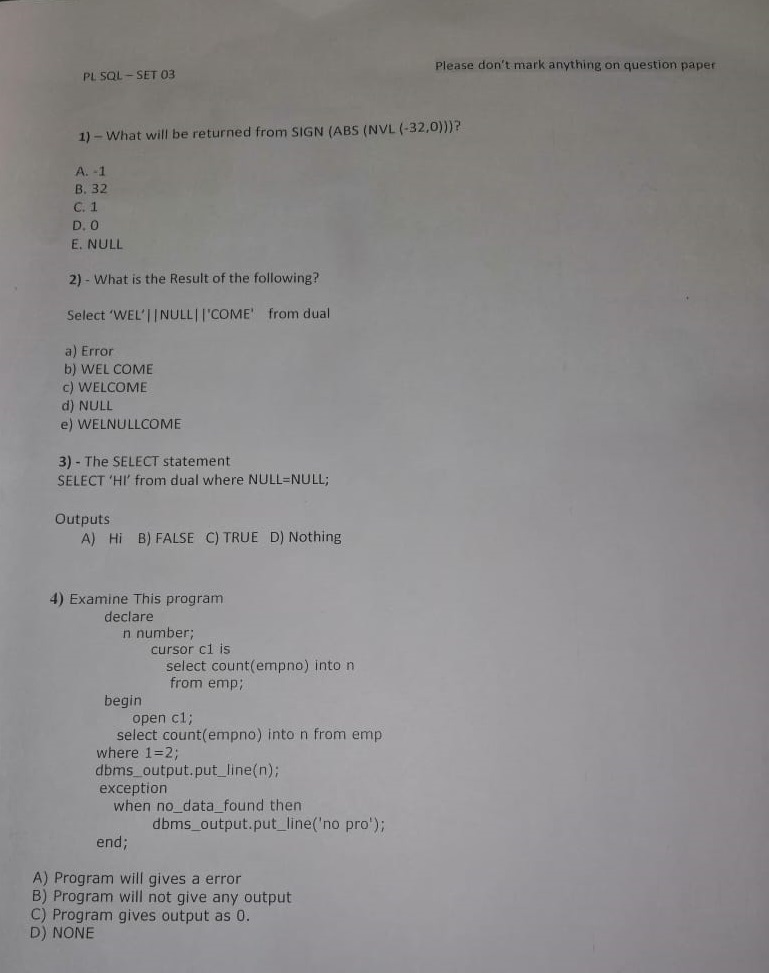
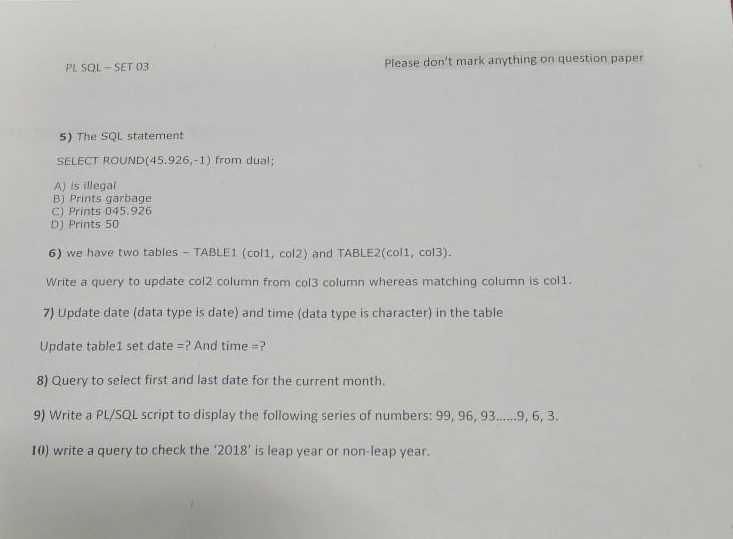
1,brief about your self and your current project.
2,have you worked on development environment.
3,Tell me the last procedure code.
4,What is collection and Types.
5,scenario given based on Varray. I have an variable which contains 100 records now I want delete last 10records.
6:Save exceptions and pragma
7,Why we use for all and save exceptions
8,Analytical function query scenario given,
9,what is DBMS profiler and explain plan.
10,why you used DBMS profiler
11, exceptions
12, scenario given based on exceptions. My procedure have to run without getting error msg which types of exception you will use.
13,Listagg
14, Tel me something about View.
15,merge query
16,Do you know about dbms scheduling job.
1.SQL loader.
2.What is constraint?
3. Difference between primary key and foreign key?
4.What is view?
5. Difference between delete and truncate?
6.can we perform dml operation in view?
7.difference between procedures and functions?
8.rank & dense rank.
9.cursor in detail.
10.null functions
1.How ur getting requests
2.If u need any clarification in task who is the contact person
4. What r the things u ll do once task completed
5.Aggregate functions
6.Listagg with Concate query
7.Mview
8.Can u able to create Index for columns which is having null values? Will Optimizer read that index?
9.Hints
10.Merge
11.All loading concepts(sql loader detailed)
12.Procedure using truncate
13.Procedure detailed
14.Functions detailed
15.Explain plan
16.About performance tuning
17.Bulk collect & bulk bind
18. Save exception
19. Few Unix commands
20. Use of anonymous block
21.Cursor
22.Collection
1. Tell me about yourself?
2. Performance tuning?
3. Index is invalid what you will do that?
4. How you rebuild the index?
5. Explain plan?
6. Gather stats?
7. What happens if gather stats command executing?
8. Table partitioning and its types?
9. Mview and its refresh method?
10. Collections ?
11. How to use nested table inside the plsql block?
12. Explain Varray?
13. Have you experience in 11g and 12c?
14. What is cursor ?
15. Refcursor ?
16. Dynamic sql??
17. Is it possible to use execute immediate for select statement?
18. Pipeline function?
19. Forall with save exceptions?
20. Where will you get the failed records?
21. Difference between rank and dense_rank?
22. Difference between lead and lag?
23. Row_number?
24. Difference between delete and truncate?
25. Physical classification of oracle?
1. Tell about your self
2.what is index . types and when you used index
3. What is trigger and types
4.exception and types
5.how to alter the sequence value 10000 to 5000 (reduce)
6.what is pragma autonomous transaction ..and where it is used
7. How to find the error in SQL and plsql
8. Table A having 10 records , table B having 6 records .. I am insert 4 records in Table A then truncating table B ...now insert 3 records in Table A ...then insert 5 records in table B now I am going to do ROLLBACK table A and Table B records ?
9. What is function and its types
10. Employees table having column Emp_I'd ,Dept_I'd,Dept_name,
salary....
Department table having column is Dept_I'd,name
Write a query for above two tables
(1). Create syntax for this two tables
(2). Find the duplicate records in employees table based on department table
(3). Select highest salary for each department ..
11. Materialized view and why you are using in you project
Tell about yourself
Tell about your project
Delete duplicate records from table
Joins and types
Write a query on 5th maximum salary
Diff b/w delete,drop,truncate
Diff b/w views and materialized view
What is gtt
What is Stored procedure and example
What is compound trigger
Functions and purposes
When you used pragma autonomous transaction
What is dynamic SQL?
Some queries asked
Today I attened 2 round in chain sys..
1.about ur self2. Performance tuning
3. What is index
4. Last incident request
5.last change request
6.Which employees getting max salary than manager salary
7.write a query We having emp table in that who is getting max salary than Krishna.
1st round questions
1. Tell about yourself
2. What is analytical functions?
3. What is cursor and its types?
4. What is exception handling and its types?
5. What is collections and its types?
6. What are the types of triggers?
7. What is compound trigger?
8. What is mutating table error? How you over come that in your project?
9. Difference between cursor and ref cursor
10. What is package?
11. What is overloading?
12. Write a procedure for scenario based question
13. How many procedures you have created so far?
14. Explain about performance tuning
15. Steps to improve the performance of the query
Chain-sys interview questions
1.introduce yourself
2.what is truncate, delete
3.how to delete duplicates
4.what about triggers and types
5.diff b/w decode and case
6.cursor types
7.exception handling
8.have u handled exception in ur project
9.why we use bulk collect
And then two scenario based questions
Chain-sys interview questions
About your self
Do you know Oracle forms
Different between detele and truncate
Different between case and decode
What is cursor and attributes and types
Why we use ref cursor
What is aggregate functions
What is listag function and quirey
How to delete duplicates in table
Different between rank and densrank
What is utl_file
What is table partitions
Thanks
Chain-sys interview questions
1.Tell about yourself
2.describe about single row function
3.describe about group function
4.describe about joins
5.if there is table t1
First we will insert then update , then alter table after that we will give rollback.what is the output.
6.write query to show first 5 highest salary.
7.difference between %type and %rowtype.
8.difference between unique key and foreign key.
9.how will you call procedure and function.
10.write store procedure where employee_id input and salary as output.
11.how will you raise an error.
12.how will you use sqlloader, describe the steps.
Chain-sys interview questions
1.introduce yourself
2.what is truncate, delete
3.how to delete duplicates
4.what about triggers and types
5.diff b/w decode and case
6.cursor types
7.exception handling
8.have u handled exception in ur project
9.why we use bulk collect
And then two scenario based questions
Chain-sys interview questions
1st round
1. Introduce yourself.
2. Rate in SQL and PLSQL.
3. Explain about subquery.
4. Explain right outer join.
5. Explain performance tuning.
6. What are the methods using in performance tuning.
7. Explain views.
8. Datas insert in view, it will affect in master table?
9. Different user inset the data in same table, what will happen.
10. Explain about trigger.
11. You can use commit inside trigger?
12. Explain about pragma autonomous transactions.
13. Explain about anonymous block
14. Different between procedure and function.
15. Able to call procedure inside function?
16. Explain about cursor.
17. Cursor types.
18. Explain refursor.
19. Explain about bulk collect.
20. Explain about exception.
21. Exceptions types.
22. Advantages of bulk collect.
Chainsys interview questions
Tell about Ur self and daily work
Dml and ddl
Delete and truncate different
SQL loder
Log file
Views
Performance tuning in SQL
What is the use of procedure in Ur project
Where Ur using function in Ur project
Questions from resume
U know about Oracle forms
Structure of plsql block
Exception handling
List out the Predefine exception handling
1.Tell about your self
2.can you use any function in your project
3. SQL function
4.Error handling
5. Second maximum salary - write query
6.Analytical function
7.DDL
8.TCL
9.DML
10.PROCEDURE
11.Trigger
12.pragma autonomous
13.have u used pragama autonomous in your project...
14.difference between decode and case
15. Difference between NVL and NVL2
Chain sys 1st round interview question
1.what is views uses of views and write syntax
2.what is synonym uses of synonym. Where ur is used in our project
3.what is index
4.what is constraint uses of constraint where ur in used in our project
5.what is cursor and its types
6.what is packages how to execute the package
7.structure of plsql block
8.where is located in ur company
1. Tell me about yourself.
2. Stud-table
slno same gender smark
1. X M. 81
2. Y. M. 75
3. Z. F. 79
Grade-table
From_mark. To_mark. Rank
1. 45. 5
46. 60. 4
61. 75. 3
76. 90. 2
91. 100. 1
Output:
Sname. Gender. Rank
X. M. 2
Y. M 3
Z. F. 2
Asked not to hard code.
2. Write a trigger using the above stud table in which we can modify the sname and gender column but it should not allow to modify smark column.
3. How to add a new parameter to an already existing procedure.
4. Diff b/w view and materialized view.
5. What is pragma autonomous transaction and where you used in your project.
6. Asked to write scenario based programs using implicit cursor, explicit cursor, bulk collect, ref cursor and collections.
Beyontec Interview Questions
1.What is index
2.wht is cluster
3.shall we create index by using select statement
3.types of join
4.showed 2 tables t1 and t2 asked output for inner join, outerjoin (left,right)
5.What is collection
6.write a procedure using collection for inserting data's from table t1 to to
7.Write a trigger to show exception when someone try deleting rows from table t1
8.how to disable multiple triggers in a table using a single query
9.what are the features of 11g and 12c
1.tell me ur roles and responsibilities
2. External table and table partitioning
3.in table partitioning using joing date of the employee do the interval partitioning
4.performance tuning
5. What are all the stored procedure u created
6. How to data migrate from one server to another server
1. Tell about your self
2. Roles and responsibilities
3. How to insert and update in single query
4. Types of index
5. Explain bree and bitmap index
6. Diff view and mview
7. Type of constraints
8. Explain forgin key
9. Perform tuning
10. Explain about sequence
11. What is the cursor
12. Where u r using in your project
13. You have any thing with out using cursor to move the data one table to another table
14. Explain Triggers
15. Explain row level trigger and where u r using in your project
16. Explain about partition
17. Explain the range partition
18. Do you know unix
19. Do you know shell scripting
20. We are looking for DBA developers
Tell about your project
Working timing
What's index and type
What is view
What is synonym and purpose
What's constraints
Write query need answers like this Mahesh, suresh
Different between stored procedure and procedures
R u working now..
Y did u leave the job...
What is c in 12c what is g in 10and11g
1.procedure vs function
2.wat is trigger
3. Can we create index on view?
4.what is index?
3. Write a full query for a table t1 a 0,1,0,1 update 0 as 1 and update 1 as 0
4. Delete duplicate values in a table
5.write 2 max sal in a table
1. Explain ur project
2. Write a query to get n th salary
3. Rank the employee using rownumber
4. Analytical fn
5. Synonym
6. View
7. Materialized view
Why we use mview
8. Index
D/b bit map and b tree index
9. Forward declaration
10. Pragma autonms trasctio
11. Constraints
D/b primary key and foreign kry
12 Stored procedure and local procedure
13. Update the gender f as m, m as f
14. Emp_name
Raja
Mani
Get output as raja,mani
1st round
1.Views
2.Index
3. difference between views and mviews
4.triggers
5.procedure
6.function
7.difference bw procedure and function
8. Difference bw joins and set operator
9 .joins types
10 cursor
11.exception
12.difference bw runtime error and syntax error
13.any ideas about MySQL
14.write program user defined exception
15. Difference between union and Union all
16.difference bw statement level trigger and row level trigger.
17.constraints
18 . difference between primary key and unique
1 What is materialized view. What types of refresh it have ?
2 What is index ? Types of index ?
3 What is collection ? Types of collection ?
4 Difference between index by table and nested table ?
5 If you declare index by table or nested table what will
Be the default value ?
6 What is cursor ? Why we are using cursor? Why can't we use index by table or nested table ? The difference?
7 Difference between function and piperow ?
8 How does the explain plan work ?
9 Do you know gather statistics ? Explain ?
10 How will you find tablelock ?
11 What is mutating error ?
12 What is exeception ? Types ?
13. Tell some predefined exception you gone through?
14 Why we use others in exception ?
15 what is hints ?
16 What is table partitioning ?
17 In bulk collect what is the use of save exception ?
18 You are using save exception how will you find the
Records that are not inserted ?
19 In table which scan will perform faster. Unique or Full scan ?
20 Difference between analytical function and aggregate functions ?
21 How you write rank functions ?
1.technical stuff which u have
2.how many incident u r working on daily basis
3.tell some frequently receiving incident and how u resolve it
4.How u r using SQL query in Ur current project
5.Last faced issue
6.future career plans for next two years
7.are u willing to learn new technologies
8.which one u r preferring support or Dev
1.what are the types of table partitions
2.do you known about composite partition.
3.view and materialized view different
4.delete and truncate different
5.aggregate function and analytical function different
6.rank and dense rank difference
7.what are the hints use used
8.how to insert bulk data
9.what is save exception
10.have u work with perform tunning
11.how will u to the query optimization
12.where will index scan increase the performance and where full scan increase the performance
13.have used utl function. Why u use utl function
14.about cursor
1. About ur self
2.project
3.day to day activities
4.do you have experience in bulk collect, collection
5.do you have experience in creating table view constraints
6.in which place is your company.
7.company process
8.noties periods
2nd round:
1.Tell me about your self?
2.What is diff between stored procedure?
3. What is cursor?
4.what is view?
5. What is dbms jobs
6. What are indexs and types?
7. What is a package
8.
Salary table
Sal column:
15000
20000
14000
Write a query to get 1st name ,max of salary from salary table.
9. T1 table
A
B
A
B
Update B in place of A and A in place B. What is the query sir?
1. Self intro
2. Day to day activities
3. Package and forward declaration
4.Difference between collection and record
5.identify the duplicate rows
6.Complexed need o/p like this
C
O
M
P
L
E
X
E
D
7. Gtt
8. In gtt concept one table created on commit preserve rows. User doing some activities in session 1 and suddenly he power off the system ,now the data will save in gtt table or not
8. Trigger
9.which methodology you are working
10. In toad what is the data module.
MSC TECHNOLOGY QUESTIONS
1.Tell about u r self
2. Synonyms and Sequence
3. What is primary key and how it works?
4. What is cursor and types?
5.tell how you work on release management.
6.write any procedure for % rowtype
7.views and mviews
8. Write correlated subquery
9. Exception and how its works?
10. What is know exception.
11. What is index? use of index in your project?
12 in Mview how we insert data and types of Mview?
MSc today interview question 1st round:
1.tell about yourself
2.explain your project
3.diff b/w views and tables
4.what is triggers and triggers type
5.diff b/w row level trigger and statement level trigger
6.diff b/w union and union all
7.what is index and it's type
8.diff b/w b*tree index and bitmap index
9.what is ref.cursor
10.what is join and it's type
11.diff b/w equi join and outer join
12.what is constraint and it's type
13.diff b/w primary constraint and unique constraint
14.what is Mviews
15.what is packages and uses of packages
16.what is Sequence and write the syntax
17.performance tuning
18.write the feature in 11G and 12c
19.A
1
2
3
6
7
How many time trigger fires in row level
And how many time trigger fires in Statement level above the table
MSC interview questions
1.what is table
2.what r the constraints
3.what is index and its types
4.what is joins and types of joins
5.why we use join
6.give join example based on ur project
7.what is table partitions why we are using
8.what is view
9.type of views
10.why we r using view
11.what is force view
12.what is materialized view and its type
13.why we use materialized view
14.what is materialized view u created explain based on ur project
15.how will log file created
16.what is methodology ur using
17.in performance tunning how will u find the problem line.
18.what is cursor and its type and attributes
19.write example for explicit and implicit cursor
20.why we are creating package
21.what is parent and child table name the table u created
22.explain correlated subquery
23.are u used toad tool
24.are u raised ticket
25.what are methods u follow to improve query performance
26.are u used trigger type of triggers
27.what trigger u used in ur project
28.write trigger to restrict data insertion in particular table
29.what are the collection types
30.where u used collection in ur project
1. Tell about yourself
2. What ticketing tool you have used?
3. Different between problem and request?
4. How did you response for the incident?
5. Create two tabels and perform inner join.
6. About aggregate function?
7. Write query to get count of students group by course id from stud and course table.
8. Willing to work in 23/7 shift?
1. Tell about yourself
2. What is your role in your project.
3. Have you interact with customer's call?
4. Have worked in performance tuning and what is that?
5. Day to day activities?
6. What are the enhancement you have done?
Virtusa first round
1. Write a function with ref cursor
2. Write a dynamic sql
3. In sql what is Exit and In
4. Write a unix command to find sql files
5. How do you conncet proc with database
6. Tell me what you know about proc
7. How do you connect your database
8. Select 1 from employees what is the result..employees table contain 10 rows
9. What was your role in support
10. How will u handle the issues
11. How many character can a varchar2 handle
12. Write a query to change datatype for column
13.have you done any performance tuning
14. How do you know if there is a problem with index
15. Different types of index and how will you decide which index is better
Virtusa for Developing
1.Tell about yourself
2. Day to day activities
3. Incident , problem ticket tool
4. What is package and it’s advantanges
5. Materialized view
6. How the data will get update in M.view
7. How the M.view log will get created
8. Global temporary table
9. Write Refcursor program
10. Query for nth max salary
11. How will Analazy the query slowness and how will u rectify that
12. Performance tuning experience and example
13. Table t1
A b
1 A,b,c
2 A,b,c
O/p will be like
A B
1 A
1 B
1 C
2 A
2 B
3 C
14. What is collection
15. Dynamic sql
16. How to implement ddl in plsql
17. Index and when you use it
18. Do you know Pro*c?
19. Have experience in writing complex sql queries ?
20. Refresh methods in M.view and explain with real time
21. What is Utl_file ? Where it can be stored ?
22. What is debugg? Explain
23. Explain plan ?
24. Exception handling
Virtusa 1st round:
1. Tell about yourself
2. Sequence scenario based question
3. Synonym and it purpose.
4. Diff betw delete and truncate
5. How to load flat files into table
6. Regexp_substr scenario
7. Display negative and positive value from the table
8. Pro c basic
9. Whether dml operation can perform in external table and materialized view
10. Write Bulk collect and bulk bind with exception combined program to fetch data and insert data into table
11. Unix commands any
12. How to copy file from one server to another server
13. How to fetch first 10 data and last 10 data
14. How to edit particular char in the file and exact command
15. Some dba privileges.
16. Performance tuning approach for slower query in a table step by step
17. Table partition approach syntax any.
Second round
1. Tell about your project activity
2. Is multiple joins are possible in a table and how many condition can give.
3. Self join scenario
To retrive data from 3 table. Eg. Order, sales and supplier table
4. Pro c basics of our own.
1. Self intro
2. Day to day activities
3. Cursor and advantages, which type of cursor using your project and reason
4.Trigger and where you used in your project
5. How to know exception handling and list out the few errors
6. Collection and types
7. Which concept you are using to load data in oracle database and explanation
8. Do u have performance tuning knowledge
9. Have you connected with server
10. Do u have knowledge in Unix comments
Msc technology 16/3/19
1. Self intro
2. Day to day activities
3. Cursor and advantages, which type of cursor using your project and reason
4.Trigger and where you used in your project
5. How to know exception handling and list out the few errors
6. Collection and types
7. Which concept you are using to load data in oracle database and explanation
8. Do u have performance tuning knowledge
9. Have you connected with server
10. Do u have knowledge in Unix comments
Capgemini interview questions
Tell about your project
Your role in your project
Difference b/w function and procedures
How many return statement we can use in function
Cursor
Cursor attributes
Use of refcursor
Table partition
Is it possible to create a partition already defined table,if yes then explain how .
Will u able to create primary key for already defined table
Use of index
Hints
In u r project where u use index
Performance tuning
Do u know any Oracle packages
Triggers
Use of UTL files
Capgemini - First round
Joins query with employee table
Diff bet view and table
Diff bet nested table , varry and nested table
about types of exception in collection
update mr if male and mrs if female in front of employee name in employee table. use cursor to process one by one record and use error log table to insert exception records captured
when a transaction will start in oracle
how will you identify a complex view and how to update a record in it
DB Architecture and normalisation
What happens when we get xception in plsql block
What happens internally when we perform dml and ddl operation in sql
How will u access a schema object from another schema
Can a column with Alias name be used in query stored in view
Query to display departments having more than two employees
1.diff b/w truncate and delete
2.diff b/w aggregate and analytical function
3.disadvantages of indexes
4.what is corelated subquery
5.how to delete duplicates in a table
6.what is bulk collect
7.if we delete rows in a table and create a new table . Now roll back what will happen
8. Exception handling
9.diff b/w procedure and functions
10.maximum how many columns can create in a table
11.how to get first 100 rows in table using dual.
Without using table name.
12.basic unix commands
13. Which is faster union or union all
TCS F2F
SQL1.What is view and view types?
2.What is index and you will create index on two column for ename,Eno and we use where clause in ename then what will happen index will perform or not?
3.Different in table and truncated?
4.What is mview?
5.how to delete duplicate records in a table?
6.diff between join and sub querys?
7.what is minus ?
8.how many columns inserted in a one table?
9.What is unique key?
10. If you truncate one table and give roll back then what will happen?
PLSQL
1.what is pragma autonomous transection?
2.write program in Plsql to print 10 records?
3.for and forall different?
4.external table?
5.how to known how many rows inserted and it query?
6.exceptions?
TCS interview questions:
SQL1. Rate itself
2.diff bw truncate and delete
3. Diff bw group function and analytical function
4. index explain
5. Parallel hint explain
6. Delete duplicate
7. Materialize view and how to refresh
8. If I drop table wt abt index and procedures
9. Need only structure of table and no need of record.how u create table
10. Find birthdate
11. Display only year
12.wt is synonym
13. Procedure contain 100 SQL statement .how to identify which is slow
14. Composite index select statement has two columns but in where clause only one column mentioned.wt is the output
15.diff bw instr and substr
1. Bulk collect explain
2. Procedure and function diff
3. Package explain
4. Can we use commit in trigger, procedure and function
5. How to print deleted no of rows in Plsql
6.collection methods
1.ls
2. Sed
3. Awk
4. Cat
1.about yourself
2.Explain about project
3.Exception handling
4.Sturucture of Exception Block
4.why use bulk collect
5.Explain Performance Tuning
6.11g features
7.difference between cursor and bulk collect
8.Are you check the execution time of bulk collect data
9.Given Reason bulk collect is faster then cursor
Maximum question ask in Collection and bulk Collection...
1. Materialized view
2. What is bulk collect
3. Difference between leftouter join and right outer join
4. Uses of packages
5. How to execute a procedure
6. Sql load and write its program
7. Write a prigram to repy the result as production 20, sales 40 by using two table
Write a program using joins
8. Difference between local variable and bind variable
9. Tell me aboit youself
10. Rate u in sql and plsql
3i Infotech 1st Round Interview Questions :
*******
1) Tell about yourself
2) Tell about your project
3) Logics you implementaed in your project
4) Roles & Responsibilities in Support
5) Roles and responsibilities in development
6) Cursor Attributes
7) Trigger & Purpose of trigger
8) Write a query to track the trigger for scenario
Scenario : We have a table named employees having columns emp id, emp name, address, age , date of joining.
If customer entered string in age column instead of number... How will u track in trigger??
3i infotech interview questions:-
1.tell me about yourself
2.what is bulk collect.
3.what is cursor.
4.difference between trigger and constraint.
5.write procedure using pragma autonomous transaction.
6.how will you handle error.
7.tell about performance tuning.
8.if there is multiple error what is the range for raising error.
9.what is collect and attributes.
10.cursor and refcursor difference.
telephonic round today in kumaran systems
Questions
1.brief about technical knowledge of yours in Oracle
2.what is view,where you used
3.Diff btwn view and materialized view
4.What is clob where it is used
5.tell about sql loader
6.tsll about external table
7.have you worked in performance tuning
8.what is procedure
9.what is function
10.What is on hold and on ice
11.diff bw union and union all
12.how you will get duplicates values in a table
13.what is there in control file
Recent Interview Questions


Infrasoft Interview Questions

Temenos interview questions
1.Consider a employee table display all records whose play more than one role
2.consider a student table display the student details with display the sum of total marks and display the percentage of total
3. Emi calculator query
4.get the aadhar details and print all the details as well as total sum of amount gaining in a year
5. Write an eassy for assinged job why u r not completed the job with a time frame


1. Self intro
2.what is role in ur project.
3. What is main nature of work
4. Nvl
5 nvl2
6 different nullif and coalesce
7.diff delete and truncate
8.diff rownum and rowid
9 how to record delete
10 I have one table. That table is 40 records . Particularly I delete 10 th record. Tell query how to delete.
11. Rating in SQL out of 10
12.select, from, where ,order by, group by, having . which order to query is execute
And explain
13. Joins &types.
14.index&types
15. Function based index with example
16 when did you complete oca.
17. What r the function u used in ur project.
18.set operator
19. Different bw union and union all
20. What is minus
21. What is partition by
22. Having clause
23.procedure
24 diff between function and procedure
25. Rowid, rownum which one is dynamic.

|
QUICK ENQUIRY
TOP COURSES
Our Reviews
Interview Questions
Interview TestPapers
Useful Links
Useful Links
Chain sys f2f interview questions
Last Work Request & Data Model
Df Nested and Correlated Subquery
SQL Basic Questions Paper for Testers
YESTERDAYS CLASS
DOCUMENT(08-01-2019)
varmaraju oracle enhance_prod resume
Production Support Daily Roles
GREESHMA D - Production Support Engineer
Certified Professional Business Analyst
Oracle query not using an index
Improve SQL Query
Performance by Using Bind Variables
Mean Stack Training in Chennai
UTL_MAIL : Email from PL/SQL in the Oracle Database
DML Error Logging in Oracle 10g Database
Managing Fragmentation and Table Shrink
